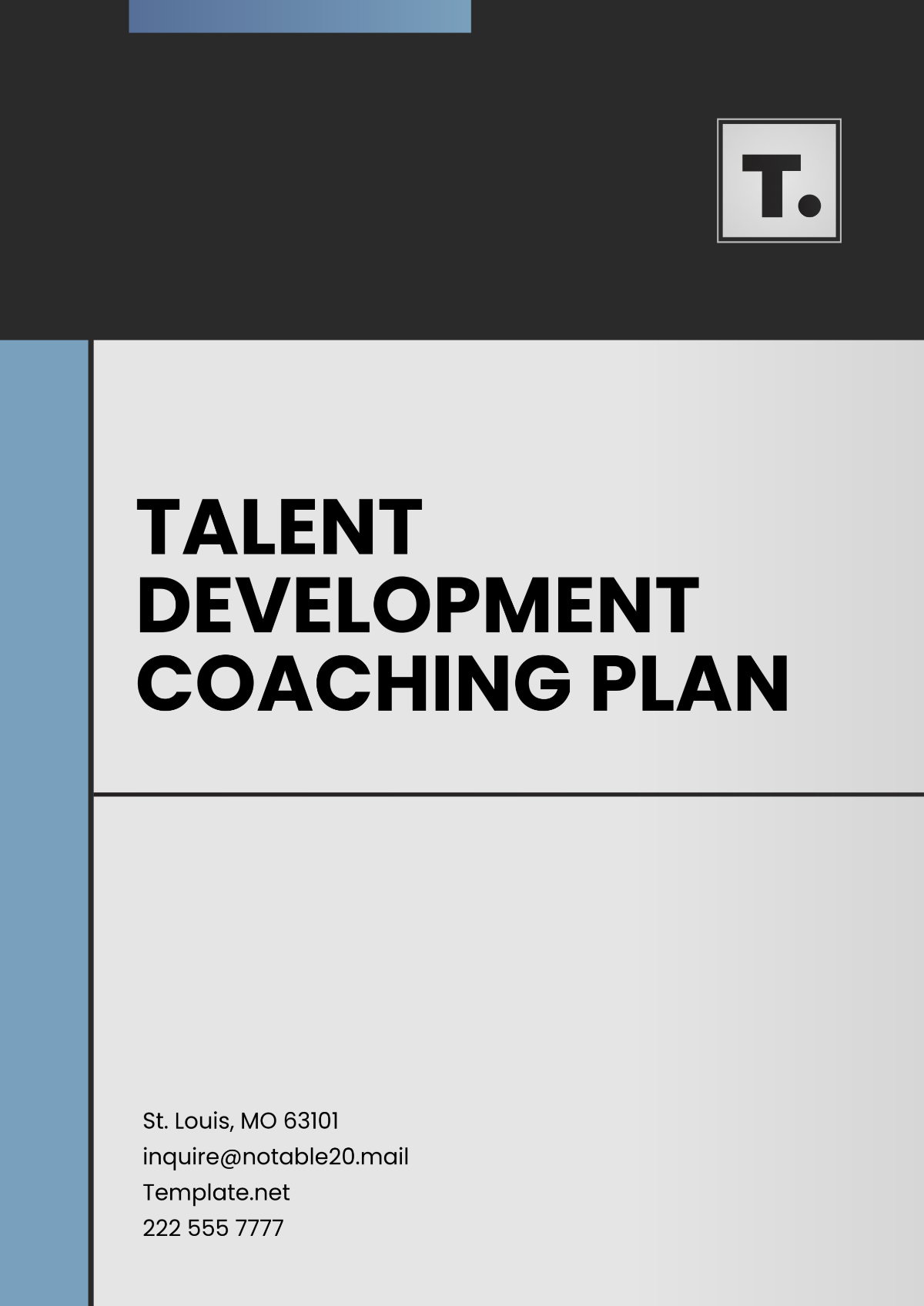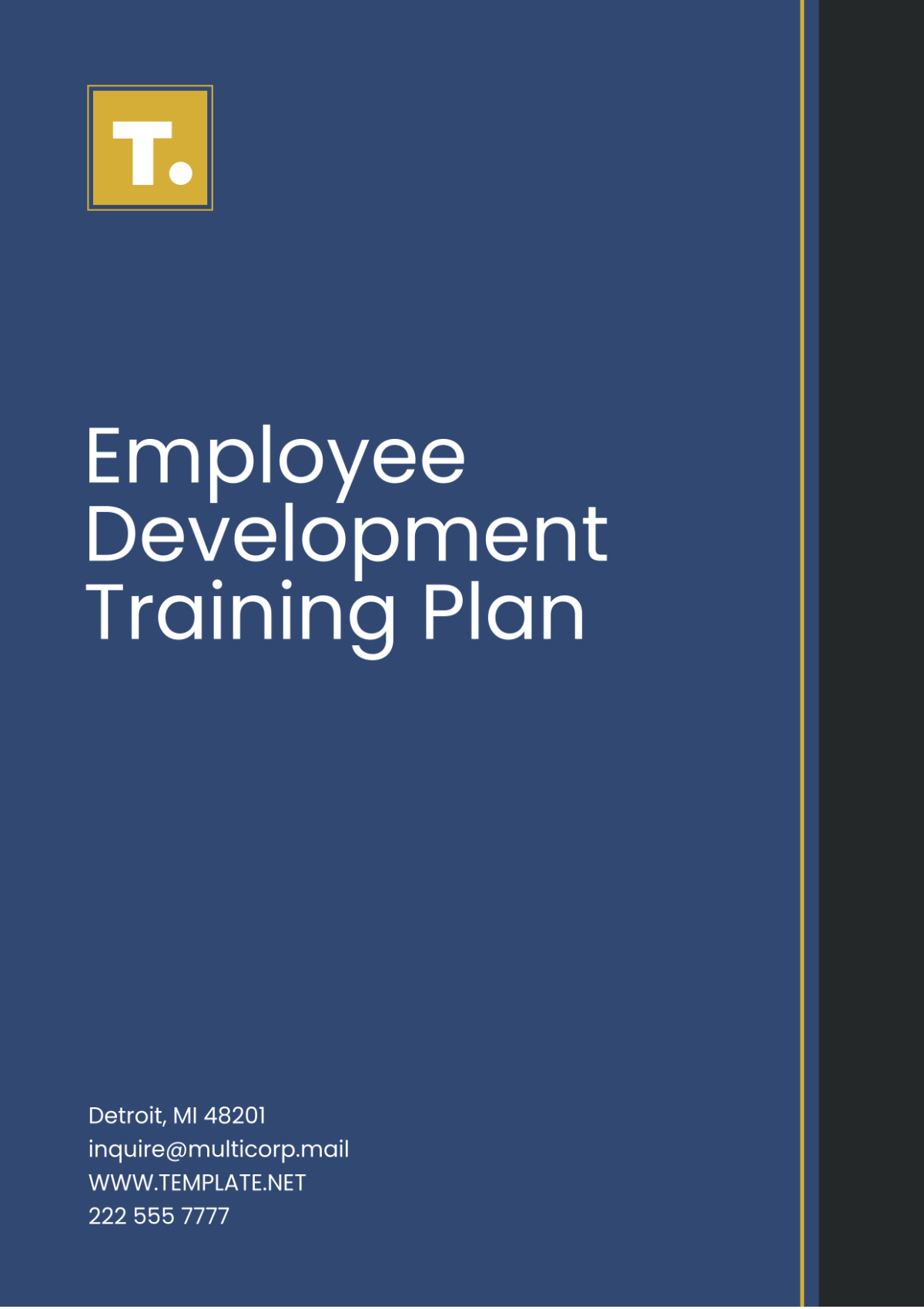Employee Development Training Plan
I. Introduction
Employee development is a critical driver of job satisfaction, productivity, and organizational success. An effective training plan ensures that employees' skills are continuously updated, aligned with industry standards, and in harmony with organizational goals. This plan outlines a comprehensive framework to identify skill gaps, provide targeted training, and evaluate progress, ultimately fostering a learning culture that enhances individual and collective performance.
II. Training Needs Assessment
A. Identify Skill Gaps
To ensure that the training program addresses the most pressing needs, it's essential to identify the current skill gaps within the organization. This process will involve collecting both qualitative and quantitative data to gain a clear understanding of the areas that need improvement.
Surveys: Distribute targeted surveys to employees and managers to assess perceived skill gaps across departments.
Interviews: Conduct one-on-one or group interviews to gather in-depth insights about specific skill challenges or opportunities for growth.
Performance Reviews: Use annual or semi-annual performance reviews to identify gaps based on employee evaluations, feedback, and job performance metrics.
B. Set Training Objectives
Clear, measurable objectives are critical for ensuring that the training efforts align with the organization's goals and are effectively evaluated. Training objectives should be specific, actionable, and measurable.
Enhance Technical Skills: Focus on improving specific technical competencies (e.g., data analysis, software proficiency, or machine learning).
Improve Leadership and Management Capabilities: Target mid- to senior-level management for leadership development, decision-making, and strategic thinking.
Foster a Culture of Continuous Learning: Encourage employees to view learning as an ongoing process, making training a regular and proactive part of their careers.
III. Training Program Design
A. Program Structure
The structure of the training program should incorporate diverse learning methods to ensure it caters to different learning styles and preferences.
Method | Description |
|---|---|
Workshops | Interactive, hands-on sessions focusing on practical skills development. |
e-Learning Modules | Self-paced, online courses that allow flexibility and are available on demand. |
Mentoring and Coaching | Personalized guidance from experienced professionals to develop specific skills. |
On-the-Job Training | Real-time, task-based training that allows employees to learn while performing. |
Group Learning | Collaborative sessions are designed to encourage peer-to-peer learning. |
B. Curriculum Development
Design a detailed curriculum for each training program. The curriculum should include:
Learning Objectives: Clearly define what learners should achieve by the end of the program.
Learning Materials: Provide relevant resources, such as reading materials, videos, and case studies.
Assessment Tools: Develop tools to evaluate employees' understanding and mastery of the content, including quizzes, tests, and practical applications.
IV. Training Implementation
A. Scheduling
Effective scheduling ensures minimal disruption to daily operations. Training sessions should be planned during times that are least likely to impact the workflow, such as during low business periods or after hours. Consideration should also be given to remote or hybrid employees to ensure equitable access to training.
B. Facilitator Selection
Choosing the right facilitators is essential for the success of the training program. Facilitators should possess:
Subject Matter Expertise: Deep knowledge of the training topic.
Strong Communication Skills: The ability to convey complex concepts in an accessible and engaging manner.
Experience in Adult Learning: A strong understanding of how adults learn, including how to motivate and engage participants.
C. Resource Allocation
Adequate resources (budget, time, and technology) should be allocated to ensure smooth implementation. This includes tools for online learning, venues for in-person workshops, and time for employees to attend training sessions.
V. Evaluation and Feedback
A. Performance Metrics
Establish key performance indicators (KPIs) to assess the effectiveness of the training program. Regular evaluation helps ensure that training investments are yielding results and meeting objectives.
Pre- and Post-Training Assessments: Evaluate employee knowledge and skills before and after the training to measure improvement.
Performance Reviews: Track employees' performance in their roles and assess how the training has impacted their job effectiveness.
Employee Feedback Surveys: Gather employee input regarding their training experience, including content relevance, trainer effectiveness, and overall satisfaction.
B. Continuous Improvement
A commitment to continuous improvement ensures that training programs evolve to meet the changing needs of both employees and the organization. The feedback collected should be used to refine and adjust future training initiatives.
Post-Training Reflections: Encourage participants to reflect on how they have applied their learning to real-world scenarios.
Review and Update Curriculum: Regularly update the training content to keep pace with industry trends, emerging technologies, and organizational shifts.
VI. Technology Integration
A. Leveraging Learning Management Systems (LMS)
An LMS is a powerful tool for tracking employee progress, managing training content, and delivering training programs. Implementing an LMS ensures that training is easily accessible and that results can be measured efficiently.
Features to Include: User-friendly interface, tracking and reporting tools, integration with other HR systems, and mobile accessibility.
B. Virtual Training Platforms
With the rise of remote and hybrid work models, using virtual training platforms can help expand reach and improve accessibility. Platforms like Zoom, Microsoft Teams, or specialized e-learning tools can support interactive and engaging virtual learning experiences.
VII. Budget and Resource Management
A. Cost Estimation and Budgeting
Estimate the financial resources required to implement the training plan effectively, considering the costs of training materials, facilitators, technology, and employee time. Set a realistic budget and prioritize spending based on organizational goals and available resources.
B. Cost-Benefit Analysis
Analyze to measure the return on investment (ROI) of the training programs. This includes assessing the impact on employee performance, retention rates, and organizational growth.
VIII. Conclusion
An effective employee development training plan is more than just a tool for skill enhancement; it is a strategic asset that aligns employee growth with organizational objectives. By following a structured approach to needs assessment, training design, implementation, and evaluation, organizations can cultivate a highly skilled, motivated, and productive workforce. This investment in employee development not only drives individual success but also contributes to long-term organizational growth, innovation, and a competitive edge in the marketplace.



